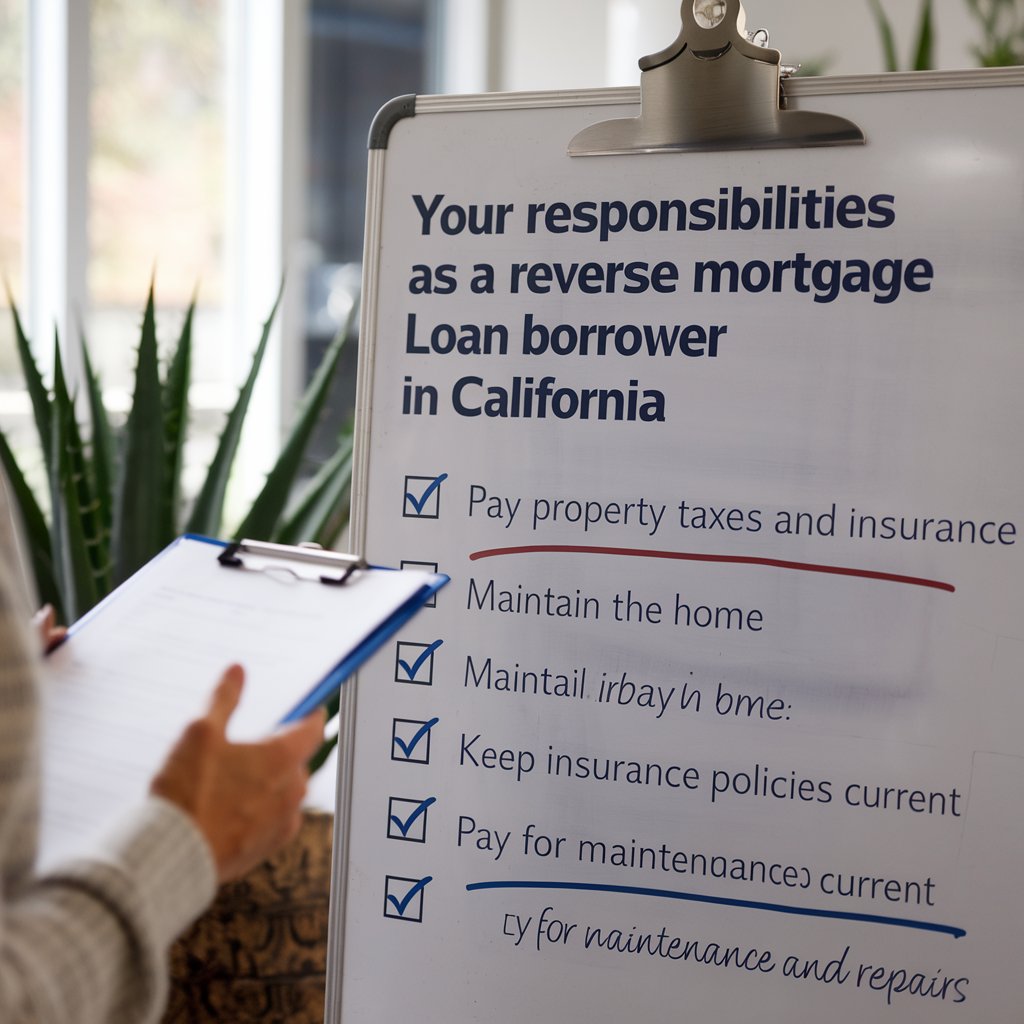A reverse mortgage loan, specifically a Home Equity Conversion Mortgage (HECM), allows California homeowners to access their home equity while remaining in their homes. However, as a borrower, you must meet certain requirements to avoid foreclosure and maintain your loan in good standing.
Your Three Main Responsibilities:
- Pay Property Charges on Time – Ensure that your property taxes and homeowners insurance are up to date.
- Maintain Your Home – Keep your home in good condition and complete necessary repairs.
- Use Your Home as Your Primary Residence – Live in your home as your main place of residence.
Pay Your Property Taxes and Homeowners Insurance on Time
Before closing on your reverse mortgage, your lender will conduct a financial assessment to determine how you will manage ongoing property charges. Based on this evaluation, you may:
- Pay property taxes and homeowners insurance directly.
- Have your servicer pay these expenses from your reverse mortgage funds.
- Set aside a portion of your loan proceeds to cover future payments.
If a reserve was created to cover these costs, your lender will either:
- Pay your property taxes and insurance directly.
- Send you the funds to make these payments if the reserve does not fully cover them.
For loans originated before April 27, 2015, lenders did not conduct financial assessments. If you have one of these loans, be sure to budget properly to keep up with these payments.
Keep Your Home in Good Repair
Your home must remain well-maintained throughout the loan period. Your lender or servicer may inspect your home to ensure it is in good condition. If necessary repairs are identified, you typically have 60 days to begin work. If you need financial assistance for home repairs, contact your local Area Agency on Aging (AAA) at (800) 677-1116 or visit eldercare.acl.gov to explore available programs.
🚨 Beware of contractors pressuring you to take out a reverse mortgage for home repairs. Explore all options before borrowing money.
Live in Your Home as Your Primary Residence
Your home must remain your primary residence, meaning you live in it most of the year. If you are absent for extended periods, specific rules apply:
- If you are away for more than 2 months but less than 6 months, notify your lender to confirm you still occupy the home.
- If you are away for more than 6 months for non-medical reasons and there is no co-borrower, your home is no longer considered your primary residence, and your loan must be repaid.
- If you are away for more than 12 consecutive months in a healthcare facility (e.g., nursing home or rehabilitation center) and no co-borrower remains in the home, the loan must be satisfied, typically through selling the property or a deed-in-lieu of foreclosure.
- If a co-borrower remains in the home, they may continue living there and receiving loan benefits as long as they meet the loan requirements.
Secure Your Future with Reverse Mortgage California
A reverse mortgage can provide financial freedom, but maintaining compliance with these responsibilities is essential. If you have any questions or need assistance with your reverse mortgage in California, we’re here to help.
📞 Call us today: 909-642-8258
📍 Google Business Profile: https://bit.ly/rmcgbp

